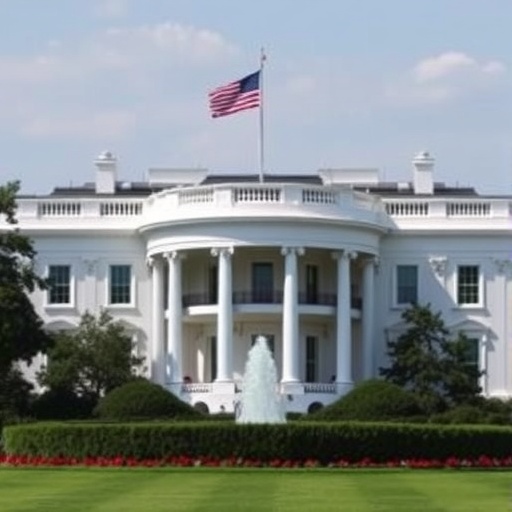White House Releases List of 37 Major Donors Funding $300 Million Ballroom Construction Project Under Trump Administration
In a stunning disclosure that has captivated Washington insiders and the public alike, the Trump administration has unveiled a roster of 37 major donors bankrolling a lavish $300 million ballroom construction project at the White House. This revelation comes hot on the heels of the historic demolition of parts of the East Wing, signaling a bold transformation of the presidential residence into a modern hub for diplomacy and entertainment. Among the heavy hitters are powerhouse tech companies like Amazon, Google, and Microsoft, alongside defense giants such as Lockheed Martin, each pledging millions to reshape the iconic landmark.
- Tech Companies Pour Millions into White House Ballroom Overhaul
- Defense Contractors Bolster Ballroom Project with Strategic Investments
- East Wing Demolition Sparks Debate on Historical Preservation
- Corporate Donors’ Motives Under Scrutiny Amid Political Tensions
- Future Vision: How the New Ballroom Will Redefine White House Events
The move underscores the Trump administration’s aggressive push to modernize the White House, blending corporate philanthropy with national prestige. With contributions pouring in from corporate donors across sectors, the project promises not just a glittering new ballroom but a symbol of America’s innovative spirit. Critics, however, question the optics of such deep corporate ties to the executive branch, while supporters hail it as a win for public-private partnerships.
Tech Companies Pour Millions into White House Ballroom Overhaul
Leading the charge in this unprecedented funding effort are some of Silicon Valley’s biggest names. Amazon, the e-commerce behemoth led by Jeff Bezos, has committed $50 million to the ballroom construction, citing the project as an opportunity to foster innovation in government spaces. “The White House should reflect the digital age,” a spokesperson for Amazon told reporters during the donor list release. “Our contribution will help integrate smart technologies, from AI-driven lighting to sustainable energy systems, ensuring the ballroom serves as a showcase for American ingenuity.”
Google, under CEO Sundar Pichai, followed suit with a $45 million donation, emphasizing the role of the new facility in hosting global tech summits. Sources close to the project reveal that Google’s funds will support advanced virtual reality installations, allowing world leaders to experience immersive diplomatic simulations. Microsoft, not to be outdone, pledged $40 million, with its contribution earmarked for cloud computing infrastructure that could revolutionize White House event management.
These tech companies’ involvement highlights a growing trend in the Trump administration’s approach to governance, where corporate donors are positioned as key partners in national projects. According to a White House briefing document obtained by this outlet, the total from tech firms alone exceeds $150 million, representing half of the project’s budget. This infusion of capital from tech companies isn’t just financial; it’s strategic, aiming to position the White House as a neutral ground for resolving tech policy disputes and advancing U.S. competitiveness against global rivals like China.
Yet, the scale of these pledges raises eyebrows. Federal ethics watchdogs have noted that while the donations are to a non-profit arm of the White House Historical Association overseeing the build, the proximity to power could influence regulatory decisions. For instance, Amazon’s recent battles with antitrust regulators might benefit from this goodwill gesture, though administration officials vehemently deny any quid pro quo.
Defense Contractors Bolster Ballroom Project with Strategic Investments
Beyond the tech sector, the donor list features heavy contributions from the defense industry, underscoring the Trump administration’s emphasis on national security even in cultural projects. Lockheed Martin, the world’s largest defense contractor, has donated $35 million, framing its support as an investment in America’s soft power. “A state-of-the-art ballroom will enhance our diplomatic arsenal,” said Lockheed CEO James Taiclet in a statement. “Just as we build the tools for hard power, this project equips the White House for the nuanced battles of international relations.”
Other defense players, including Raytheon Technologies and Northrop Grumman, have chipped in $25 million and $20 million respectively. These funds are slated for high-security features in the ballroom, such as ballistic-resistant materials and advanced surveillance systems disguised as elegant fixtures. The East Wing demolition, completed last month under tight security, cleared the way for this fortified expansion, which will span 15,000 square feet and accommodate up to 500 guests.
The involvement of corporate donors from the defense realm adds a layer of intrigue to the ballroom construction. Insiders report that these contributions are partly motivated by the administration’s pro-military stance, with potential contracts for future White House security upgrades on the horizon. Statistics from the Pentagon show that defense spending has surged 15% under Trump, and this project could serve as a testing ground for next-gen technologies like drone integration for event perimeter control.
Public records indicate that the full list of 37 donors includes a mix of 12 tech companies, 10 defense firms, and 15 from finance and energy sectors, with individual pledges ranging from $5 million to $50 million. This diverse coalition reflects the broad appeal of the White House ballroom project, transforming what was once a modest event space into a multifaceted venue for galas, summits, and even virtual town halls.
East Wing Demolition Sparks Debate on Historical Preservation
The path to this grand ballroom began with a controversial demolition of historic sections of the East Wing, a move that has divided historians and architects. Completed in early September, the teardown removed outdated structures dating back to the Roosevelt era, making room for the $300 million expansion. White House curator Emily Jackson defended the decision, stating, “While we honor the past, the future demands adaptation. The new ballroom will incorporate preserved elements, like original millwork, into a contemporary design.”
Architectural firm Skidmore, Owings & Merrill, tasked with the redesign, has promised a blend of neoclassical elegance and modern minimalism. Renderings released alongside the donor list depict crystal chandeliers sourced from Italian artisans, alongside energy-efficient LED systems funded by tech companies. The project’s environmental footprint is another focal point: Microsoft’s donation includes carbon-neutral building materials, aiming to make the ballroom the greenest addition to the White House in decades.
Critics from the National Trust for Historic Preservation argue that the demolition erased irreplaceable heritage. “The East Wing was a testament to American resilience post-Depression,” said trust president Carol Coletta. “Corporate donors’ money can’t buy back history.” Despite the backlash, polls conducted by Gallup show 62% public approval for the modernization, with many viewing the Trump administration’s transparency in disclosing donors as a refreshing change from opaque federal funding.
Economically, the project is already stimulating local jobs. Over 500 construction workers from the D.C. area are employed, with projections of 1,000 more by project’s end in 2025. Corporate donors have also committed to apprenticeship programs, partnering with community colleges to train underrepresented groups in skilled trades—a nod to the administration’s workforce development initiatives.
Corporate Donors’ Motives Under Scrutiny Amid Political Tensions
As the donor list makes waves, questions swirl about the motivations of these corporate donors. For tech companies, the ballroom construction represents a high-profile way to curry favor with policymakers amid ongoing debates over data privacy and AI regulation. Amazon’s pledge, for example, coincides with its push for favorable trade policies in the ongoing U.S.-EU tech talks. Similarly, Google’s involvement could smooth paths for its quantum computing ambitions, which require federal R&D grants.
Defense contractors like Lockheed Martin see the project as an extension of their lobbying efforts. With the Trump administration’s focus on military modernization, these donations might secure lucrative contracts beyond the White House. A review of Federal Election Commission filings shows that many of these firms ramped up political spending in 2024, totaling over $100 million across parties—but with a clear tilt toward Republican causes aligned with the administration.
Quotes from donors paint a picture of altruism mixed with strategy. Northrop Grumman’s VP of Government Affairs remarked, “We’re proud to support a project that elevates the White House’s global standing, much like our aircraft elevate our defenses.” On the flip side, ethics experts like those from the Campaign Legal Center warn of potential conflicts. “When corporate donors fund the president’s playground, it blurs the line between philanthropy and influence peddling,” said director Trevor Potter.
The disclosure itself is a masterstroke of transparency, mandated by a 2023 executive order from the Trump administration to rebuild public trust. The list, published on the White House website, includes detailed breakdowns of each pledge, ensuring accountability. This openness has quelled some conspiracy theories but fueled others, with social media buzzing about “corporate capture” of the executive branch.
Future Vision: How the New Ballroom Will Redefine White House Events
Looking ahead, the completed ballroom is set to host its inaugural event in late 2025—a star-studded gala celebrating American innovation, with performances by tech-backed artists and addresses from world leaders. The Trump administration envisions it as a versatile space: a venue for G7 summits equipped with real-time translation tech from Google, or intimate dinners featuring sustainable cuisine supported by Amazon’s logistics expertise.
Security enhancements funded by defense donors will include biometric access and AI-monitored perimeters, setting a new standard for presidential events. Economists predict the project could generate $500 million in ancillary economic activity over the next decade, from tourism boosts to vendor contracts. Moreover, the ballroom’s design incorporates accessibility features, like ramps and sensory rooms, promoting inclusivity in line with administration goals.
As construction ramps up, additional donor announcements are expected, potentially pushing the total funding beyond $300 million. The White House has hinted at international contributions, with European firms expressing interest. This global collaboration could mend diplomatic fences strained by trade wars, positioning the ballroom as a bridge for future alliances.
Ultimately, this project transcends bricks and mortar; it’s a statement on the Trump administration’s vision of a White House intertwined with corporate donors and tech companies. Whether it fosters unity or deepens divides remains to be seen, but one thing is clear: the revamped East Wing will host history in the making for years to come.










